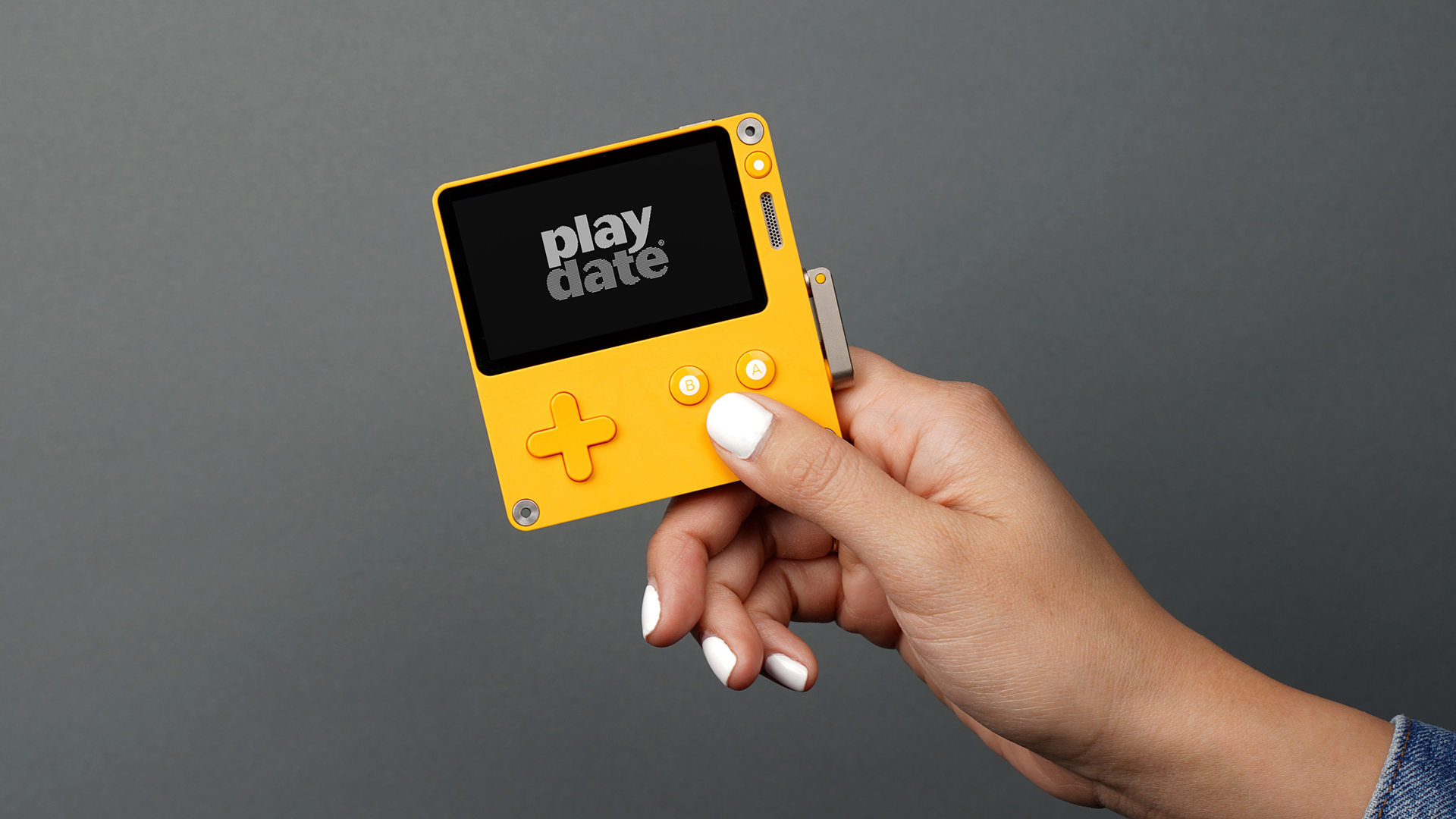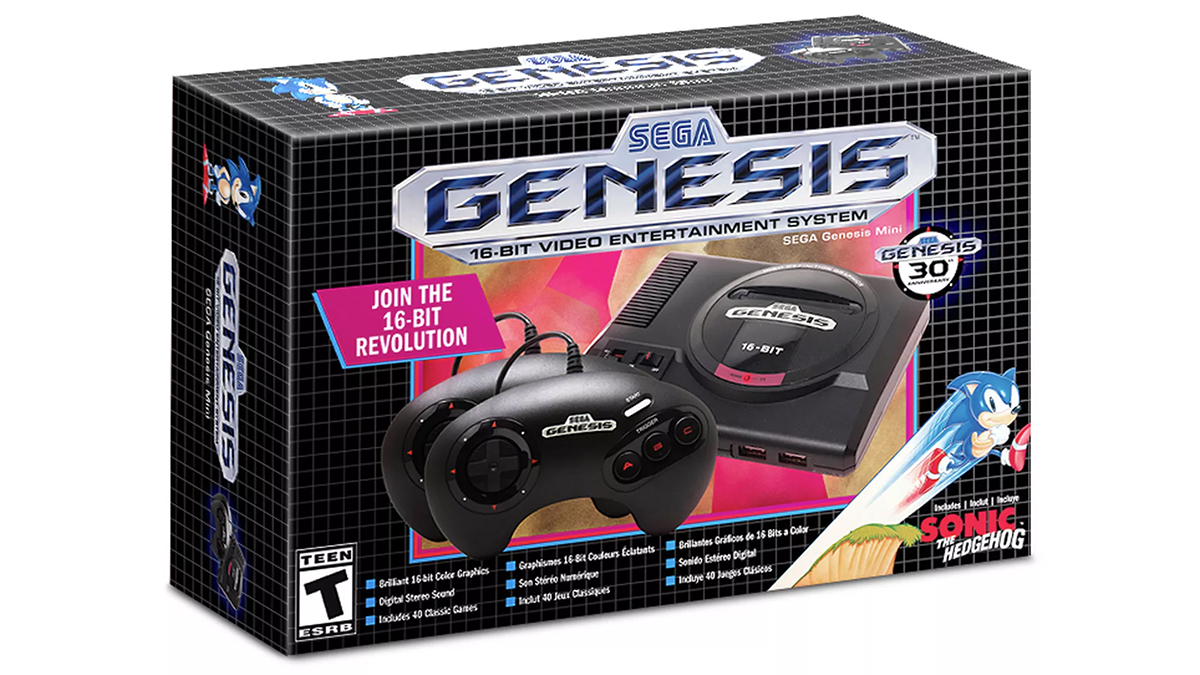
As E3 2019 approaches, next-gen is on everyone’s minds, from the drip-feed of information on PS5’s specs to Xbox Project Scarlett. Then again, if things go Google’s way, dedicated hardware could be a thing of the past as we simply play the latest games from any screen hooked up to the internet via Stadia.
And then there’s Playdate. Arriving in 2020, this bright yellow indie-focused handheld console is as far away from ‘next-gen’ as you can imagine. Take a look at its 1-bit monochrome screen with fewer buttons than the original Game Boy, and you might even call it retro if it wasn’t for the fact that it’s also got a crank on the side that’s sure to create new gaming experiences - indeed it’s the only control input for the first announced game Crankin’s Time Travel Adventure by Katamari Damacy creator Keita Takahashi.
It’s certainly not attempting to compete with the big boys, yet it’s also the most wonderful looking console we’ve seen for a long time, embracing its own quirks and constraints that serves as a reminder of what makes consoles special in the first place.
Outside of the box

The problem is that consoles haven’t felt unique for ages. As each generation gets more powerful, they’ve become little more than gaming PCs. The PS4 and Xbox One are essentially black or white set-top boxes that inoffensively blend in with the other boxes under your TV - ‘sleek’ is just an excuse to sand down any quirky edges.
This applies to the controllers as well. The number of buttons, triggers and analog sticks have remained the same for PlayStation and Xbox, and it’s no surprise that Google’s own controller apes those designs.
It’s this kind of homogeneity that allows Google to adopt a tagline for its streaming platform Stadia: “the future of gaming is not a box”. Because other than the company logo, what really sets these boxes apart? If there no tangibly defining quality, then why would we care if they were to be swept aside with the cloud tomorrow?
Playdate is the refreshing answer to that, and one that nobody had been expecting, but then that was its raison d’etre from creator Panic.
Get daily insight, inspiration and deals in your inbox
Sign up for breaking news, reviews, opinion, top tech deals, and more.
As taken from the company’s press release, “Nothing’s surprising anymore, and surprises are great! Panic saw an opportunity for something truly different in the world of videogames. Something small-scale that could deliver a dose of fun and delight to videogame players who have otherwise seen it all.”
Touch of retro

Of course, it might be unfair to compare a device that fits comfortably into your shirt pocket with powerful beefy home consoles but, even in the handheld space, Playdate breaks away from its contemporaries. Not only is its display monochrome and not backlit, there’s also no touchscreen. As Panic’s design partner Teenager Engineering puts it, “We want to break people of their touch psychosis”.
It’s actually for this reason that the crank was introduced to Playdate. It’s such a bizarre feature, and time will tell whether it’s just a gimmick, but it’s both this distinction along with the console’s deliberate constraints that reminds me of past consoles.
“We want to break people of their touch psychosis.”
Teenager Engineering
For while the industry is chasing next-gen and putting more numbers onto specs than the last generation had, retro hardware still delights us, as seen by the success in mini releases in recent years. It’s partly driven by nostalgia factor, but having these things literally in your hand again is a reminder of their unique designs. Just put a Super Nintendo and Sega Genesis side by side and nobody’s going to be confused which is which.
Older gaming hardware was also defined by its constraints. Watch a PS4/Xbox One/PC video comparison and most people will barely notice the difference but in the 8-bit and 16-bit eras consoles had vastly different specs in their chipsets, so limited color palettes gave each system its distinct look, or you can identify a system purely based on its sound chip, whether it’s the SID chip of the Commodore 64 or the Genesis’s Yamaha synthesizer chip that gave its music more kick.
The controllers of course also offered different experiences in your hand. Even when Sega introduced a six-button controller to support the Genesis version of Street Fighter II, it wasn’t just a copy of the SNES controller.
They Nintendon’t make ’em like they used to

We often look to Nintendo to innovate, from the three-pronged N64 controller to redefining how we interact with games with both the DS and the Wiimote. Yet the Nintendo Switch is in many ways sees the company going more with the flow than ever.
Sure, a system where you can have home-console quality experiences on the go has long been a dream. But conversely, we’re also playing the same old games (with ports flooding in every week, quite literally so). Its relative parity to current-gen hardware means designing a game with handheld in mind is a thing of the past.
Of course, there’s benefits to streamlining, especially for third party developers who can bring their games to all platforms without compromising on quality or wasting resources to tailor to another system’s specific features or limitations. But when a developer embraces a console’s quirks, we also get new experiences.
"If consoles are to ensure survival in the face of the cloud, they need more than a lot of bigger numbers."
While we’re still wondering if Rockstar will ever port GTA 5 to Switch, there’s a shame knowing there’ll never be something comparable to Chinatown Wars on the DS, a game hardly inferior to GTA 4 but rather a brilliant alternative suited to the platform it was made from the ground up for. As the Switch renders the 3DS obsolete, so too does it signal the end of dual screen gaming, perhaps the last true innovation we’ll see from Nintendo in the portable gaming space.
It’s why Playdate’s silly little crank and its season of bite-sized games made to only fit within its yellow square is refreshingly important. Contrary to what Google dismissively thinks of gaming’s past and present, consoles are not just boxes, they’re defined by their distinct personality while and their constraints come to give them their identity.
If consoles are to ensure survival in the face of the cloud, they need more than a lot of bigger numbers, they need to remind us what makes them different and a joy to hold in the first place. And what’s more different and joyful than a crank?
- Read more: Xbox Two vs PS5: predicting the future
Alan Wen is a freelance journalist writing about video games in the form of features, interview, previews, reviews and op-eds. His work has appeared in print including Edge, Official Playstation Magazine, GamesMaster, Games TM, Wireframe, Stuff, and online including Kotaku UK, TechRadar, FANDOM, Rock Paper Shotgun, Digital Spy, The Guardian, and The Telegraph.
